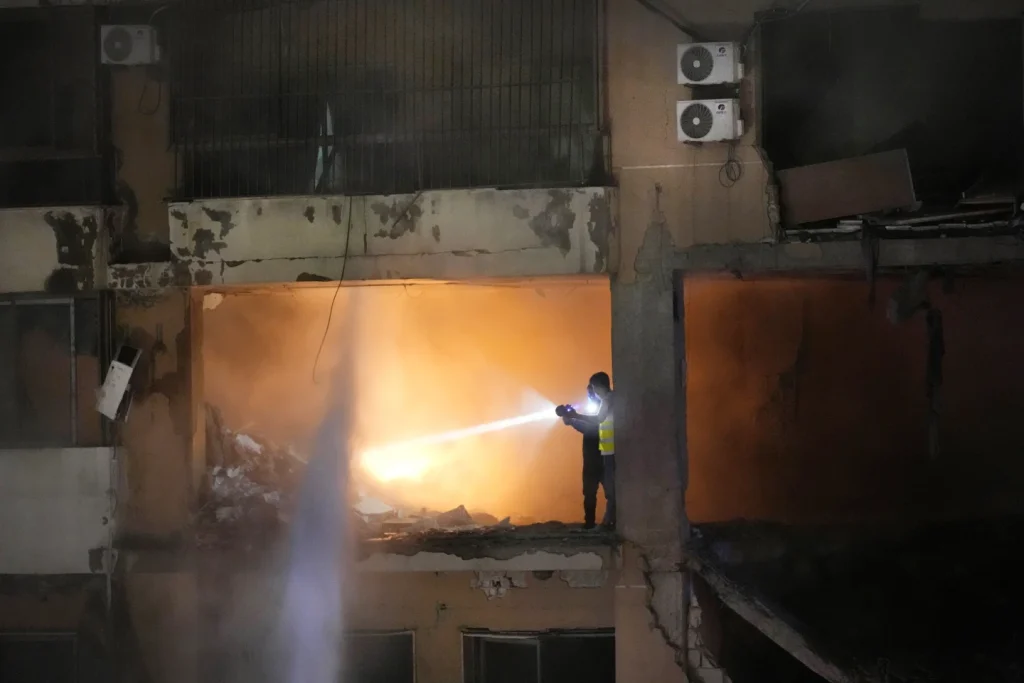The recent series of airstrikes and counterstrikes between Israel, Hezbollah, Hamas, and Iran have escalated tensions in the region, raising concerns about the potential for a catastrophic war in Gaza to spill over and engulf the entire Middle East.
The longstanding conflict between the U.S. and Israel on one side, and Iran and its allied militant groups on the other, has created a volatile and precarious situation where any party could inadvertently trigger a wider war in an effort to avoid appearing weak.
The recent killing of a Hezbollah commander in Lebanon by an Israeli airstrike, the rocket attack on a sensitive Israeli base by Hezbollah, and the Israeli airstrike that killed a senior Hamas militant in Beirut have all contributed to the growing risk of a regional conflagration.
These actions, combined with a U.S. airstrike that killed an Iran-backed militia leader in Baghdad and clashes between the U.S. Navy and Iran-aligned Houthi rebels in the Red Sea, have heightened the potential for a larger conflict.
The divisions within each camp further complicate the situation, adding another layer of volatility to an already precarious situation.
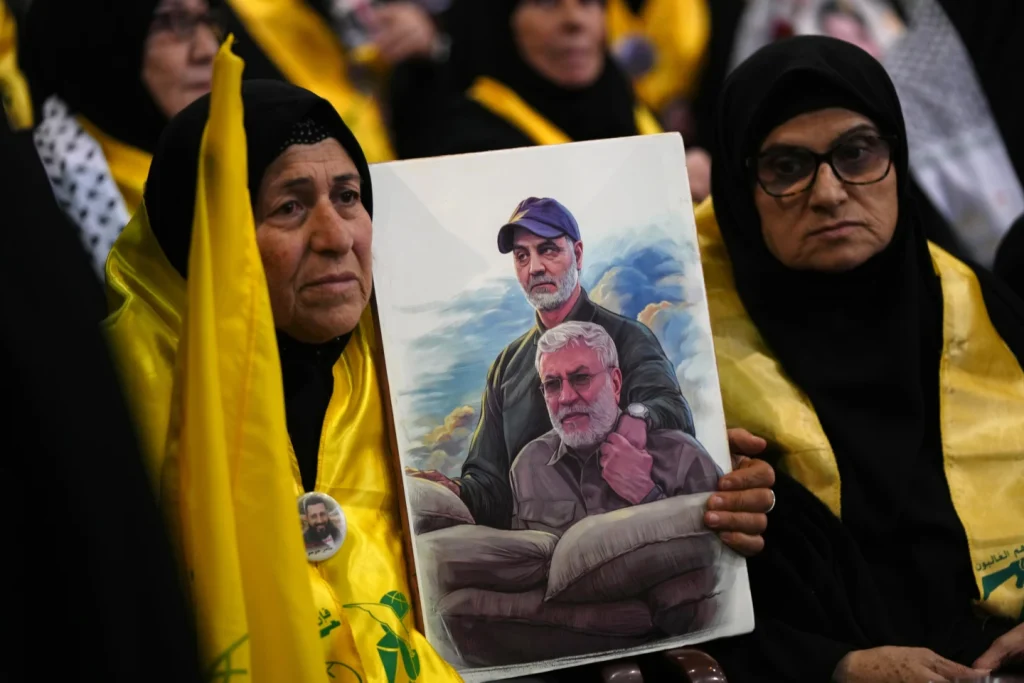
Hamas, for example, may have hoped that its recent actions in southern Israel would draw its allies into a wider conflict, while Israelis are increasingly discussing the need to change the equation in Lebanon.
Meanwhile, Washington is working to contain the conflict, but as the intertwined chess games of regional politics grow more complex, the potential for miscalculation and unintended escalation rises.
The implications of a wider conflict in the Middle East are deeply troubling. Not only would it result in untold human suffering and loss of life, but it could also have far-reaching consequences for global security and stability.
The potential for the conflict to draw in other regional and international actors, as well as the possibility of unintended consequences and escalation, make the situation all the more perilous.
In light of these developments, it is imperative for all parties involved to exercise restraint and pursue diplomatic solutions to the underlying issues driving the conflict.
De-escalation and dialogue are essential to averting a wider war and finding a sustainable resolution to the longstanding tensions in the region.
The international community, including the United Nations and other relevant actors, must also play a constructive role in facilitating dialogue and promoting peaceful resolution of the conflict.
Ultimately, the recent series of airstrikes and counterstrikes in the Middle East underscore the urgent need for a comprehensive and inclusive approach to addressing the underlying causes of the conflict.
Only through concerted diplomatic efforts and a commitment to dialogue and de-escalation can the region hope to avoid the catastrophic consequences of a wider war. The stakes are high, and the time for action is now.
The recent events in Gaza have once again thrust the region into the spotlight, igniting debates and discussions about the intricate web of geopolitical, historical, and ideological factors at play.
The attack by Hamas on October 7, 2023, and the subsequent devastating military campaign launched by Israel have reignited tensions and raised critical questions about the future of the Palestinian cause, the role of regional actors, and the specter of further escalation.
Hamas has presented its attack as a response to decades of Israeli dominance, asserting its stance as a purely Palestinian initiative.
There is no evidence to suggest direct involvement or prior knowledge by Iran, Hezbollah, or other allied groups in this assault.
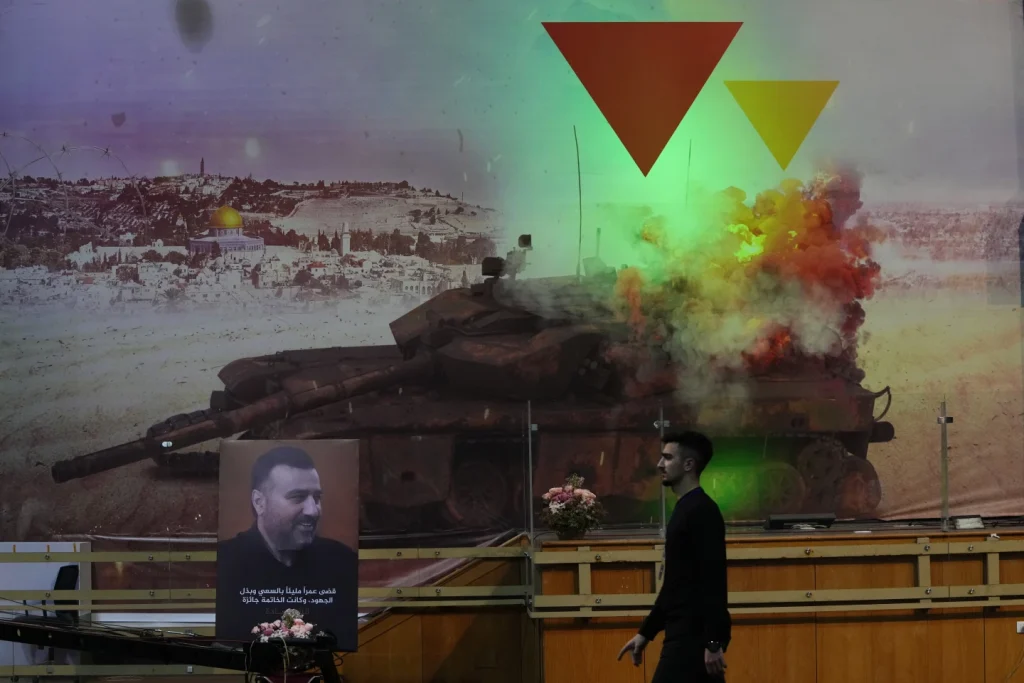
However, Israel’s robust response to the attack has prompted the so-called Axis of Resistance, led by Iran and its supported militant groups, to confront the need for a strategic response.
The Palestinian cause holds deep significance across the region, and leaving Hamas to face Israel’s formidable military might alone could potentially jeopardize the longstanding military alliance that Iran has diligently cultivated since the 1979 Islamic Revolution.
The delicate balance of power in the region has prompted experts to speculate on the necessity of a significant event that would signal a resolute stance against Israeli aggression, without necessarily escalating into full-scale war.
Hezbollah, as one of Iran’s key regional proxies, finds itself grappling with a formidable dilemma. The group faces the challenge of responding to Israeli attacks, such as the strike in Beirut that claimed the life of Hamas’ deputy political leader, without appearing weak or unreliable.
However, the prospect of triggering a full-scale war with Israel presents Lebanon, already embroiled in a severe economic crisis, with the daunting specter of widespread destruction and devastation.
Hezbollah’s calculated strikes along the border, seemingly aimed at engaging Israeli forces, reflect a careful calibration of actions to contain the conflict’s intensity.
The recent barrage of rockets fired at an Israeli military base by Hezbollah, though sending a resolute message, stopped short of instigating a full-scale war.
The delicate balance of power raises critical questions about the threshold for escalation – how many rockets, how many casualties, would warrant a full-blown offensive?
The intricate calculus of Israeli responses underscores the determination to ensure the return of evacuated communities near the border with Lebanon, and the potential inability to tolerate a continued armed Hezbollah presence on the border.
The specter of a resumption of hostilities is further underscored by Israel’s repeated threats to employ military force if Hezbollah fails to abide by the 2006 U.N. cease-fire, which mandated the militant group’s withdrawal from the border.
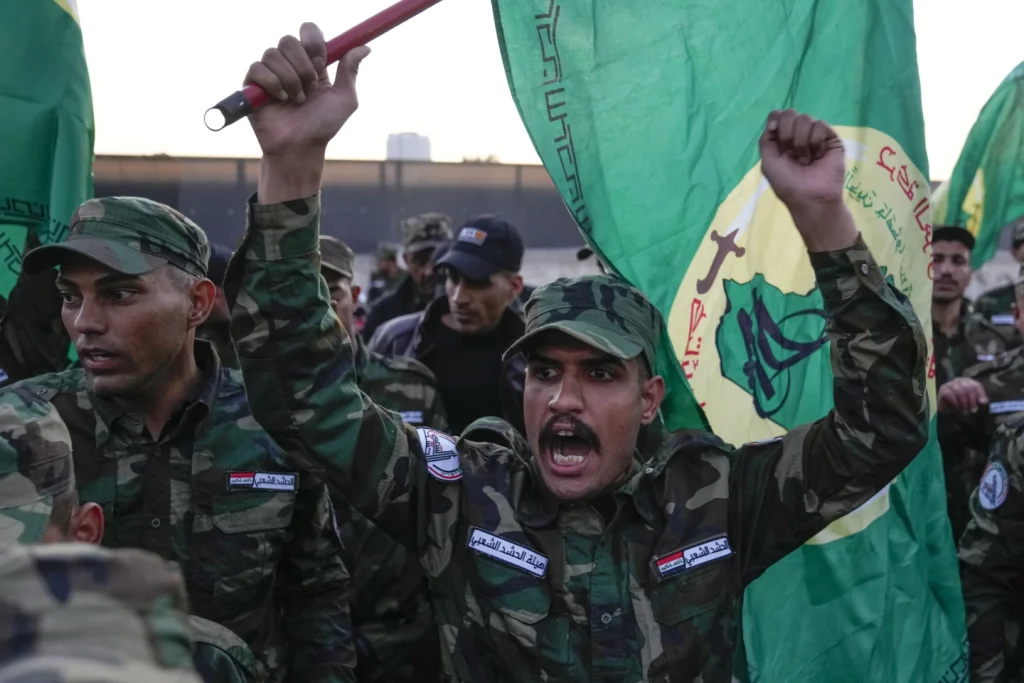
The complex interplay of historical grievances, regional power dynamics, and strategic calculations underscores the formidable challenge of de-escalating tensions and avoiding a descent into all-out conflict.
In conclusion, the recent events in Gaza have brought to the forefront the intricate web of regional dynamics, historical grievances, and strategic calculations that underpin the ongoing struggle.
The delicate balance of power, the threshold for escalation, and the potential consequences of further conflict underscore the pressing need for diplomatic initiatives, de-escalation efforts, and a concerted commitment to finding a sustainable resolution to the longstanding tensions in the region.
The evolving situation in Gaza stands as a stark reminder of the complex challenges that continue to shape the Middle East, and the imperative of addressing them with wisdom, foresight, and a commitment to peace and stability.
The recent deployment of two aircraft carrier strike groups by the U.S. in the region in October has sent a clear warning to Iran and its allies.
However, it seems that not all parties have received this message, as Iran-backed militant groups in Syria and Iraq have launched numerous rocket attacks on U.S. bases.
Additionally, the Iran-backed Houthi rebels in Yemen have attacked international shipping in the Red Sea, potentially impacting the world economy. Iran has claimed that its allies are acting independently and not on orders from Tehran.
The U.S. has faced challenges in assembling a multinational security force to protect Red Sea shipping and has been hesitant to attack the Houthis on land, especially as they appear close to reaching a peace deal with Saudi Arabia.
Meanwhile, Israeli officials have expressed concerns that the window to get both Hezbollah and the Houthis to stand down is closing.
The question that arises is, how will this situation end? Regional tensions are likely to persist as long as Israel continues its offensive in Gaza, with the aim of crushing Hamas.
Many are skeptical of the possibility of achieving this goal, given Hamas’s deep roots in Palestinian society.
The U.S., which has provided significant military and diplomatic support for Israel’s offensive, is seen as the only power capable of ending it.
Iran’s allies seem to believe that Washington will intervene if their own costs become too high, leading to the attacks on U.S. bases and international shipping.
In an effort to contain the violence through diplomacy, U.S. Secretary of State Antony Blinken, European Union foreign policy chief Josep Borrell, and German Foreign Minister Annalena Baerbock have all returned to the region this week.
However, it is likely that the most significant messages will continue to be sent through rocket attacks.
Analyst Ali Hamadeh, who writes for Lebanon’s An-Nahar newspaper, believes that negotiations will continue to take place through indirect means, as neither the U.S. nor Iran want an open war with each other.
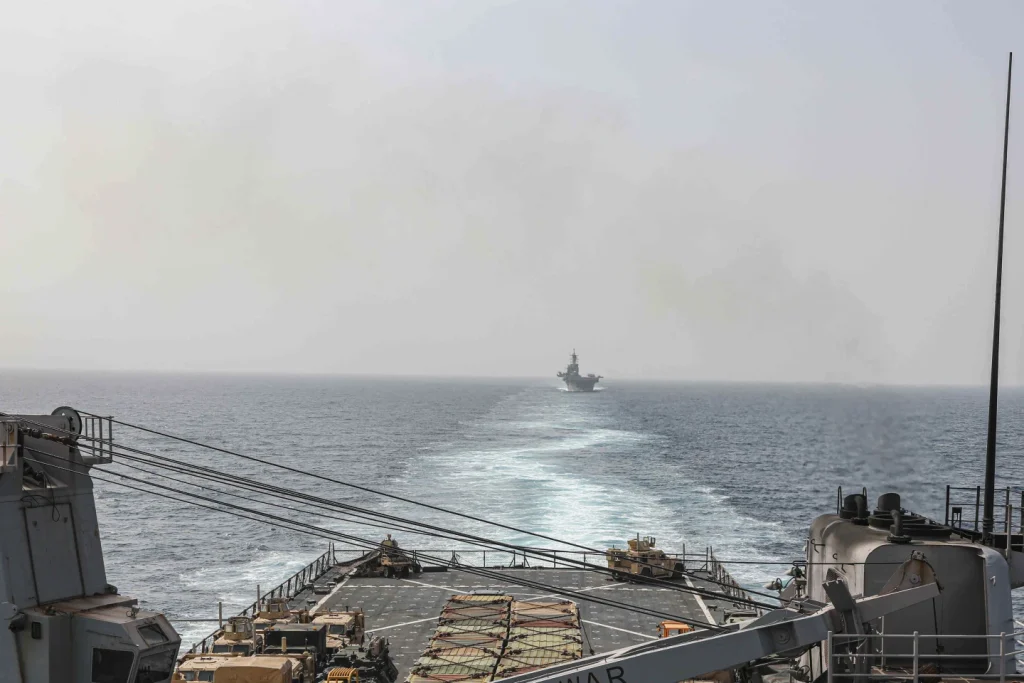
This “negotiation by fire” approach underscores the delicate and volatile nature of the current situation.
In conclusion, the deployment of U.S. aircraft carrier strike groups has sent a clear warning to Iran and its allies, but the region remains embroiled in tensions and violence.
The involvement of various international actors, including the U.S., Israel, and Iran, adds complexity to the situation.
The potential for negotiations through indirect means, such as rocket attacks, highlights the challenges of finding a peaceful resolution to the conflict. The road ahead is uncertain, and the actions of key players in the region will continue to shape the outcome.
